Original source: HashKey Capital

Summary:Summary:
The Web 3 music track has now attracted the attention of capital and the community. According to incomplete statistics, from 2021 to the present, the financing amount of Web 3 music projects has exceeded 200 million US dollars, and the ecology has also grown stronger. In this survey, we interviewed Chen Huanren, the first Chinese-language musician who issued NFT, and started from the traditional music industry to explore why we need Web 3 music. The main reason is that under the traditional music model, artist remuneration is too low and the industry chain is complicated and opaque. The entire upstream and downstream of Web 3 music includes: upstream music creation and generation, midstream trading platform and downstream streaming media. In addition, there are other directions including copyright and record DAO. Finally, we discussed possible problems in the future development of Web 3 music, including the complexity of off-chain royalties on the chain, relatively short commercial chains, lack of visual impact and application scenarios, insufficient IP and traffic, and weak token economic models.
first level title
one. Why do we need Web 3 music? — Allocation is not properly resolvedOn Spotify, the world’s largest streaming media platform, the royalties earned by artists range from 0.003 to 0.005 U.S. dollars for each play. The founder of Audiam, a streaming media royalty collection agency, said that although the number of Spotify’s users continues to increase, the royalties paid to artists have increased significantly. The drop, the drop in royalties already started in 2013.
The polarization of royalties is serious.There are 8 million musicians uploading songs to Spotify, about 60,000 new songs are uploaded every day, and 99.3% of the artists earn less than $10,000 a year.
Artist income is low.The 10,000 US dollars can’t all flow into the pockets of artists. The music industry chain is extremely complicated and opaque. After passing the downstream streaming media, there are still royalties in the upstream. As well as agents and distributors, the royalties that are finally distributed to musicians are very small.
Black box royalty.
Because there is no simultaneous disclosure of the relevant entities in the music industry chain, about 655 million black box royalties will be generated every year. Chen Huanren also pointed out that in recent years, people have believed that music is a free product. In addition, royalties often do not reach core creators, and more than half of musicians earn less than the minimum wage.Music NFT can solve the troubles of income, expenses and fandom establishment for artists:
NFT directly generates income.Imagine that a not-so-famous independent musician sells a music NFT worth 0.1e on the platform, which is equivalent to 67,000 plays on Spotify, which is often an unattainable number for niche independent musicians . This money can be used as the income of musicians, so that the creation of musicians is no longer about generating electricity for love.
Establish subsequent start-up capital.In addition, selling music NFT can also be regarded as a fundraising behavior for future music products and plans, which saves time and effort compared to the traditional market research and marketing costs of millions.
Form a positive interaction with fans.
two. Web3 music industry chain - complete and traditional, in the stage of exploration
The main tracks of Web 3 music include: 1) Upstream creation; 2) Midstream transactions; 3) Downstream streaming; 4) Others include music communities and record DAOs, copyrights, and fan economies. The entire track is still relatively early. Taking April as an example, the monthly trading volume of the OpenSea music sector is about 4 million US dollars (the most active 40 music NFT addresses), and the Audius market cap with the largest market value is currently around 320 million US dollars. , the FDV is around 500 million US dollars, and the financing activities are mainly concentrated in the seed round, and some projects have not yet been financed.
secondary title
2.1 Streaming Media Streaming — the traffic entrance for fans
As mentioned above, in the traditional streaming media mode, streaming media is a third-party platform between artists and fans. Content creation, revenue realization, the most representative project is Audius.2.1.1 Audius — Decentralized Music Portal
Low barriers to participation:Audius retains the shadow of traditional Web2 music streaming media, and is relatively friendly to Internet users entering Web3. The platform does not require users to have a decentralized wallet, just log in with an email address, and after the user logs in, if there is no metamask, the platform will automatically assign a Hedgehog AUDIO wallet address. The use process of the entire webpage is similar to that of traditional players, such as Like and forward songs, create playlists, upload music, follow favorite creators, etc., the user experience is relatively smooth, the threshold is also very low, and all functions are free, which is one of the reasons why Audius can accumulate relatively more in the Web3 music track .
Content that engages users:Strong ecology, weak tokens:
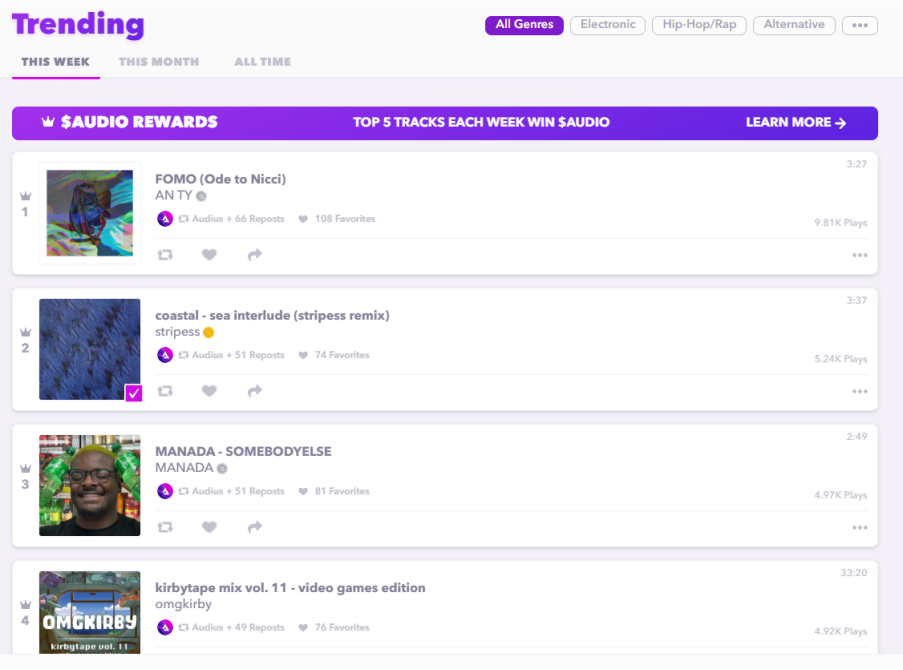
image description
Source: Audius
secondary title
2.2 Trading Platform - Differentiated Empowerment
The model of the music NFT trading platform is basically the same as that of selling other NFTs, so other differentiated empowerment of the trading platform is the key for users to compare different platforms, such as the competition of traffic IP and the design of the token economic model.
Every song on Sound.xyz can be listened to for free, but only a few users can buy it, and the unit price is variable, about 0.1e. It is based on a fragmentation mode of 1 of many, and the threshold is not high. Choose whether to support the artist after the song. One of the more outstanding aspects of the project is its social attributes. As shown in the figure below, after users purchase music NFT fragments, their avatars can be displayed in Audience, and the higher up are the earlier supporters. In addition, each user can comment on a certain moment of the song. The artist will bury an easter egg at a certain moment. If the user leaves a message at the moment closest to the easter egg, the user will receive a special NFT from the artist. It's interesting to see the early supporters of each piece of music.
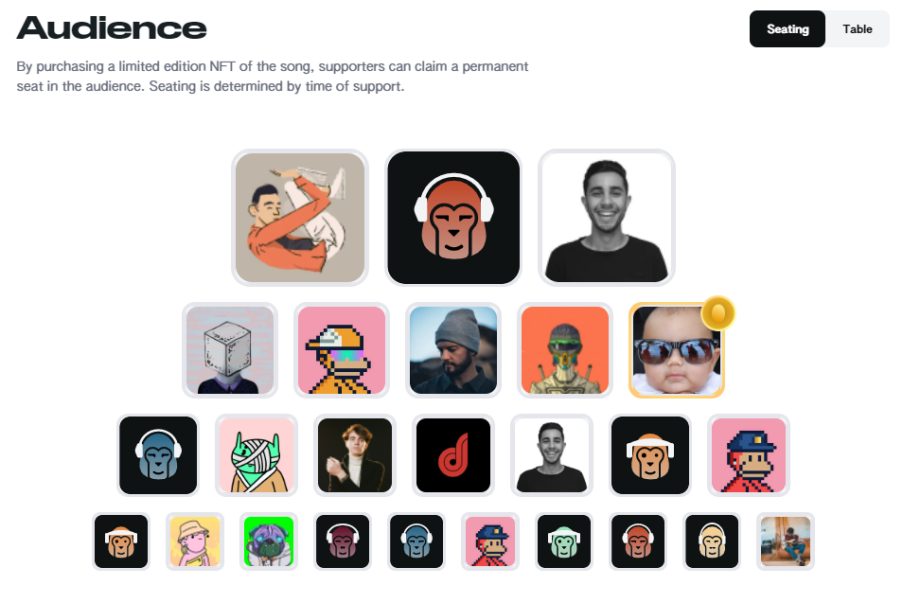
image description
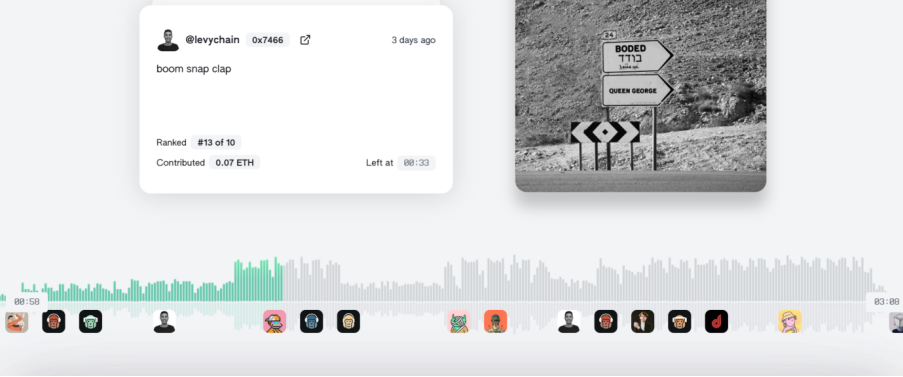
Source: Sound.xyz
Sound's music NFT supply and new series status:
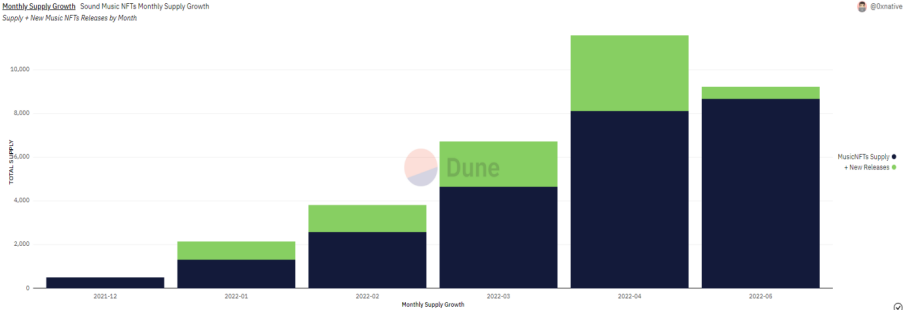
Source: Dune Analytics
image description
Source: Dune Analytics
Catalog monthly transaction volume:
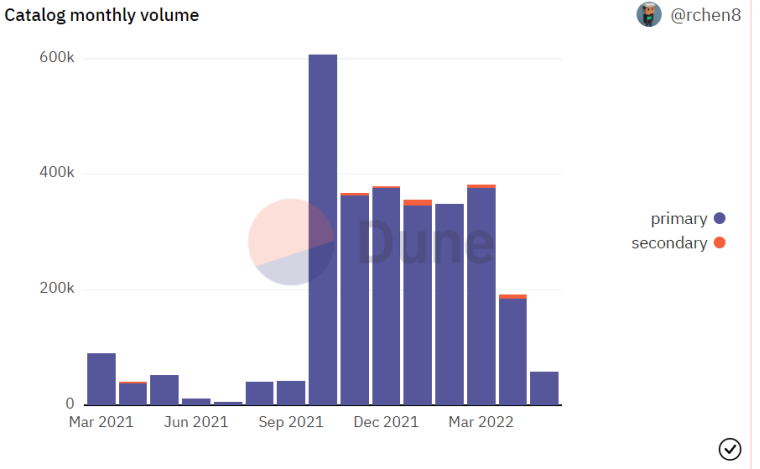
Source: Dune Analytics
image description
2.2.3 Pianity — Distinctive Economic Mechanism
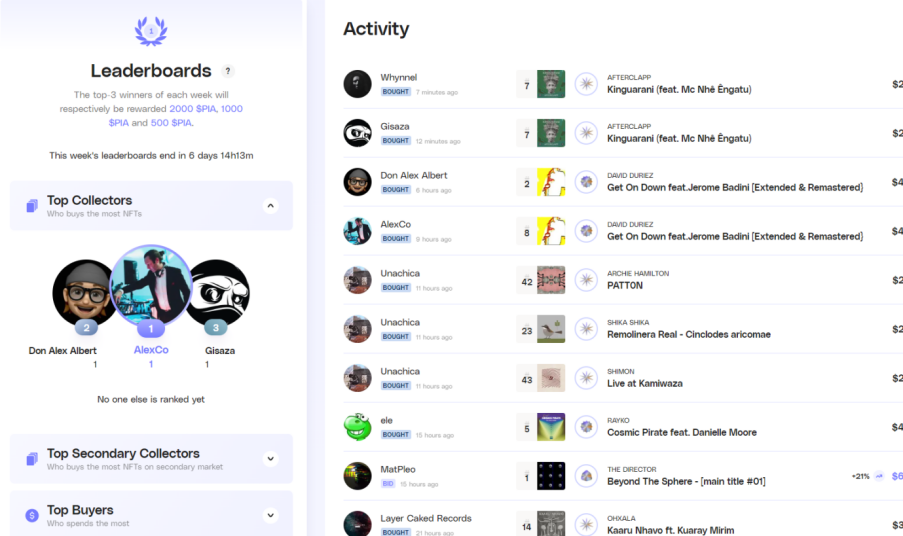
Pianity is an Arweave-based music NFT trading platform. Both the primary and secondary markets are open, and the trading methods include instant trading and auctions. The highlight of Pianity is token incentives. In order to encourage transactions, Pianity also adopts transaction mining, but instead of simply brushing volume, it uses liquidity subsidies to buy the most NFTs in a week, buy the most NFTs in the secondary market, spend the most, and spend the most. The top three who frequently Bid and invite the most new users can get PIA token rewards, and the rewards are divided into three levels: 2000PIA, 1000PIA and 500PIA. In addition, other users who have purchased NFT on the platform will also be rewarded. The amount of PIA rewarded is the share of the total value of NFT on the user's Pianity to the total value of all NFT on the platform multiplied by the number of PIA issued every week, thus encouraging players to purchase and collect. At present, PIA cannot be traded yet, and the price is 0.1U. In addition to purchasing cashback, another function of PIA is that token holders vote to decide which song to put on the shelves. The community decides which song in the waitlist can be put on the shelves. The number one song every day can be minted into NFT, and the review right is delegated to the community. Effectively reduce the infringement of decentralized music platforms.
image description
2.2.4 OneOf — bring traditional traffic
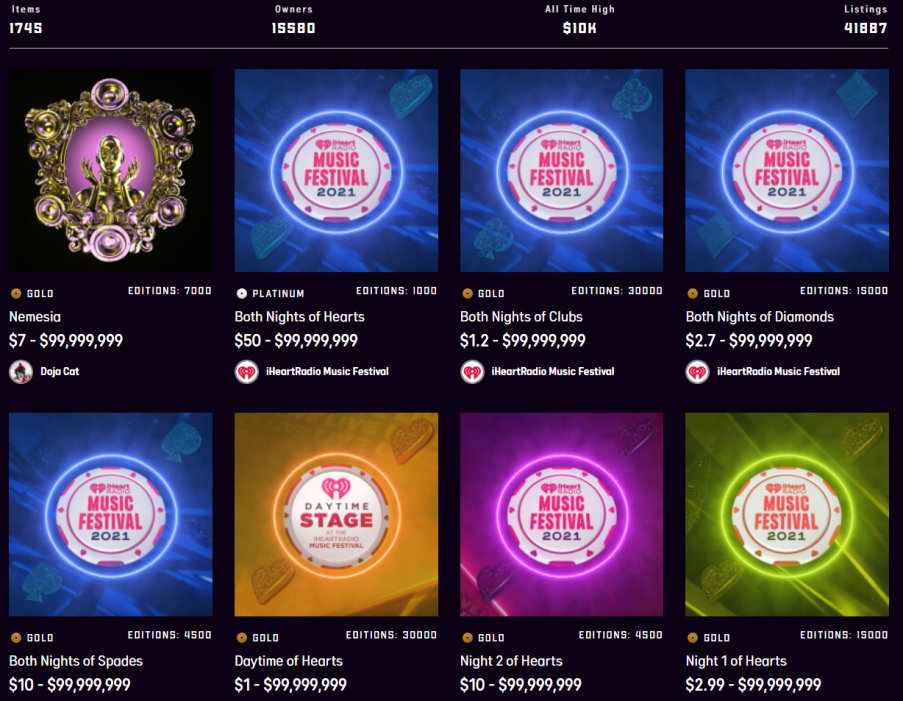
OneOf is an NFT platform based on the Tezos network. The founder team of the platform has its own traffic, including the famous producer Quincy Jones. It has established partnerships with Warner Music, the Grammy Awards, and iHeartRadio. OneOf has signed three contracts with the Grammy Awards. Annual agreement to issue NFT for the 64th, 65th, and 66th Grammy Awards. What attracted the most attention on the platform was the release of Whitney Houston's unpublished recordings when he was 17 years old, with a price of more than 1 million US dollars. The gameplay of NFT on OneOf is very diverse. Musicians can issue NFT on the platform. The gameplay of different NFTs is also different, including fan benefits, blind boxes, levels, collection and exchange, synthesis, etc. It is basically the logic of selling collections, without players. The platform needs to do KYC, all NFTs are priced in US dollars, and credit card purchases are supported.
image description
2.2.5 Mint Songs — strong investor resources
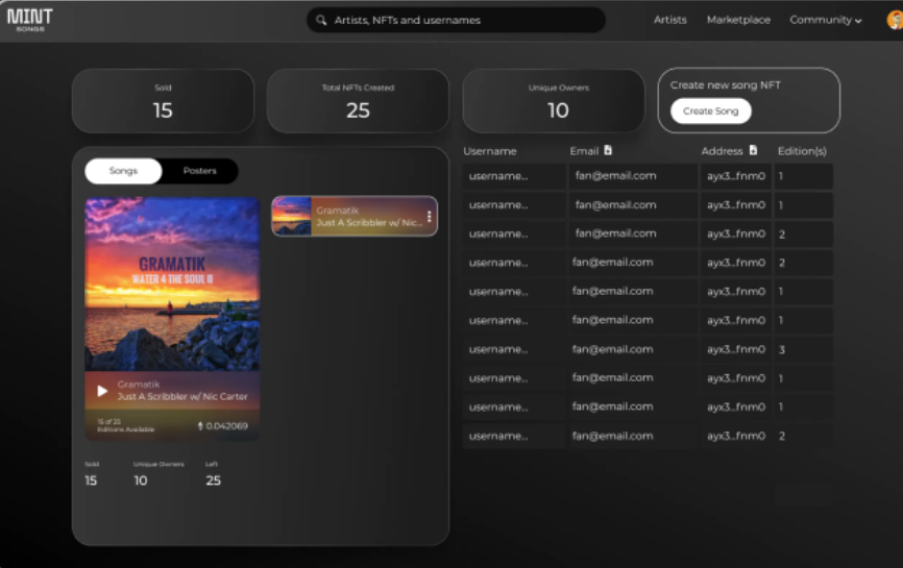
Mint Songs is a platform built on Polygon to help creators free mint music, album poster NFT and build a Web3 fan community. After free mint music NFT, the artist can sell the NFT in the marketplace of the platform, and get 95% of the income for the first sale, and 10% of the income for the second resale. All music NFTs are stored on IPFS. These posters and music NFTs can be airdropped to the artist’s community for free, and there is also a dashboard for artists to analyze their works and the community situation, helping artists manage the community. The current business model on the platform is mainly simple mint songs and transactions. The community building between fans and musicians is still very early. The number of Twitter fans of the top seller artists on the platform generally does not exceed 1,000, which belongs to relatively small music people. Mint Songs completed a $3 million seed round of financing in December last year, led by Castle Island VC, with participation from Coinbase Ventures and IOSG Ventures. This round of financing will be used to continue to expand the team and develop community management tools for artists.
Source: Mint Songs
On the whole, each music platform has its bright spots: including Sound.xyz’s strong social attributes and fragmentation model; Catalog’s 1/1 sales form of complete singles; Pianity’s token incentives; Mint Songs’ investor resources; OneOf Music resources and traffic.
secondary title
2.3 Secondary Creation/Generative Music—The Creative Source of Web3 Music
Secondary creation means that users can create based on the music resources already on the platform or uploaded by other users, and the platform provides creation tools. Generating music is also a branch of Web3 music upstream creation, that is, players can purchase or collect individual tracks to combine into different music. The introduction of music units can increase the leverage of the entire music creation sector. Refer to the gameplay and diversity of PFP NFTs, for music The track brings more imagination.
2.3.1 EulerBeats — the main algorithm to generate music
Futura's model is to first issue 4040 Mixpass NFTs. Each Mixpass NFT holder can generate two Mix NFTs. Each Mix NFT has a randomly generated cover picture and music. Music has a total of 30 attributes. Each music vary in rarity. The upper limit of the number of Mix NFTs is 8080, and now a total of 5423 have been exchanged. In addition, the EulerBeats team has also created 11 Master NFTs. All Master NFTs and Mix NFTs are for future users to mix. Mixing is called Remix NFT. Two input sources can form a Remix. The mixing process will Do it in Remix Studio (not yet online, what mixing tools and how to mix are unknown). In the future, EulerBeats will also introduce Clips that represent different Stems in Mix music. Users can purchase individual Clips. In the future, if a Clip is used in a mix, the Clip holder will get a commission, but it is not yet online. Knowing is drawn into specific patterns.
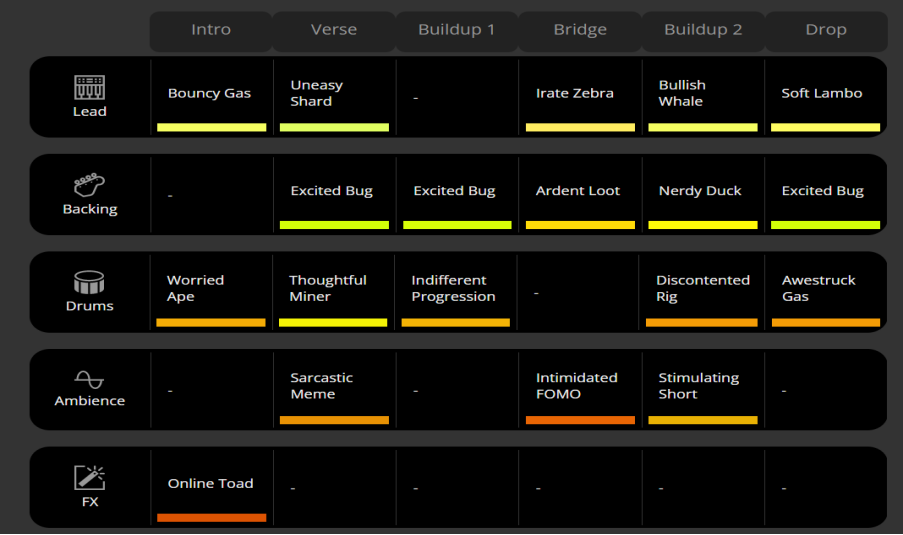
Other similar secondary creation projects include Melos. The main mode is that users can modify and secondary create music NFTs uploaded by other users on the site to form Gen 1 music NFTs (the original author's version is Gen 0).
image description
2.3.2 Async.Art — highlighting the composability of music

image description

image description
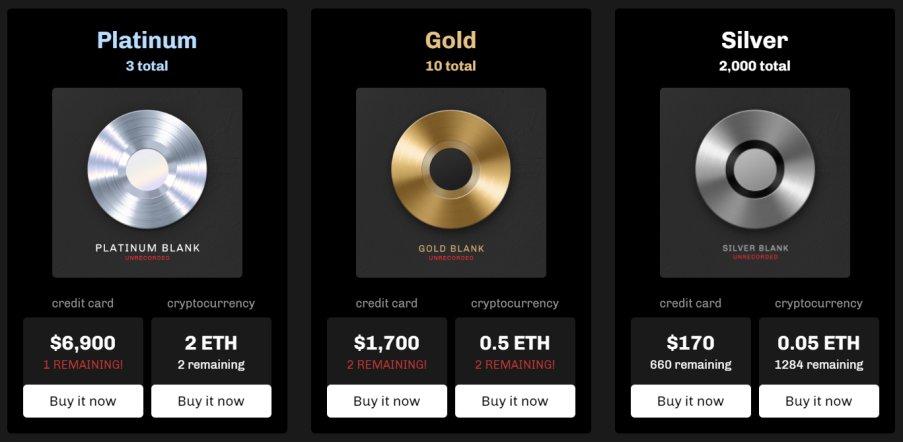
image description
Source: Async.Art
secondary title
2.4.1 Eulerbeats
2.4 Royalties/Fans Economy - Musicians and fans have a positive interaction
The main method of Web 3 music royalties includes the release of limited edition NFTs of rare original discs similar to vinyl records. In the process of replicating the original discs, original disc holders can continue to make profits. In addition, the artist's offline royalties are distributed to fans in proportion, which is the logic of artist crowdfunding, which is equivalent to fans investing in artists and sharing their results. This also leads to the concept of fan economy. Fans have changed from traditional consumption to investment, and they have formed a cooperative relationship. Artists have also gained more effective fans. In addition to sharing royalties, there are other benefits that need to be cashed.
The idea is that the holder of the original disc has the right to commercially use the music, and mint and buying a reissue version are equivalent to investing in the original disc. The more people buy the copy, the higher the value of the original disc and earlier copies, and finally the holders of the copy and the original disc form a benefit-sharing community.
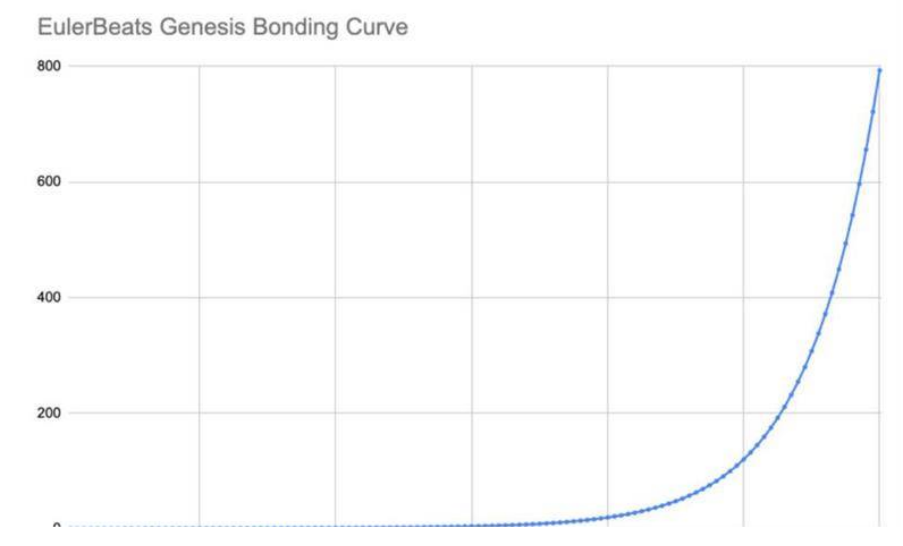
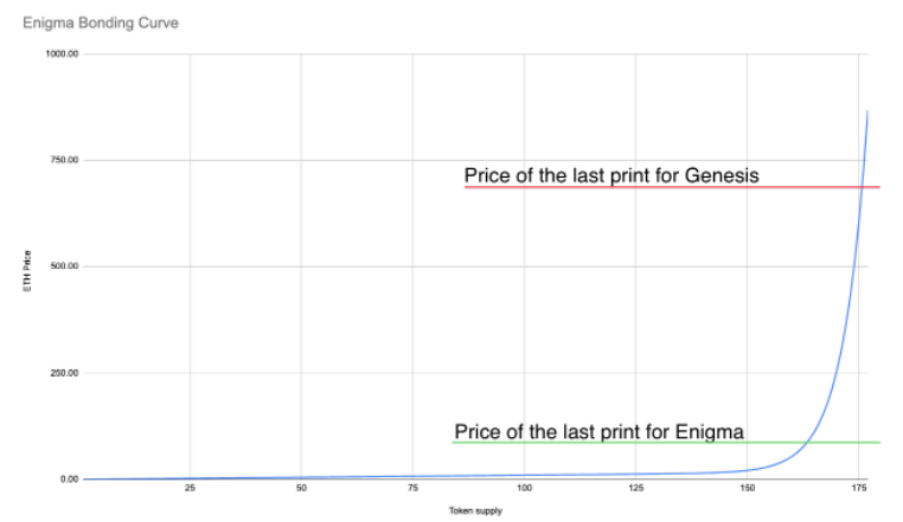
Both Genesis and Enigma have 27 original discs (also called LPs). The metadata and music files of the 27 original discs are stored on the Ethereum chain. , Genesis original disk can be reproduced 119 copies, Enigma original disk can be reproduced 160 copies. 8% royalties on Genesis and Enigma copies go to the original disc owner. The price of the copies of the two series is related to the supply quantity of the copies. The formula of the bonding curve is f(x)=a(b+x)+cx+d, and the values of a, b, c, and d of the two series are different. It can be seen from the price and supply curve that the initial cost of the replica version is very low. By the time of the last copy, the price of Genesis is expected to reach about 721e, and the price of Enigma can reach about 53e. Taking Genesis as an example, only LP01 has cast 61 copies, and the mint price has reached about 4.7e. The rest of LPs have cast about 30 copies, and the price is around 1e. The total royalty income of Genesis is 1184.68e, and all royalties of Enigma Income is 136.42e.
image description
Source: Eulerbeats
2.4.2 Royal — Solve the distribution of royalties
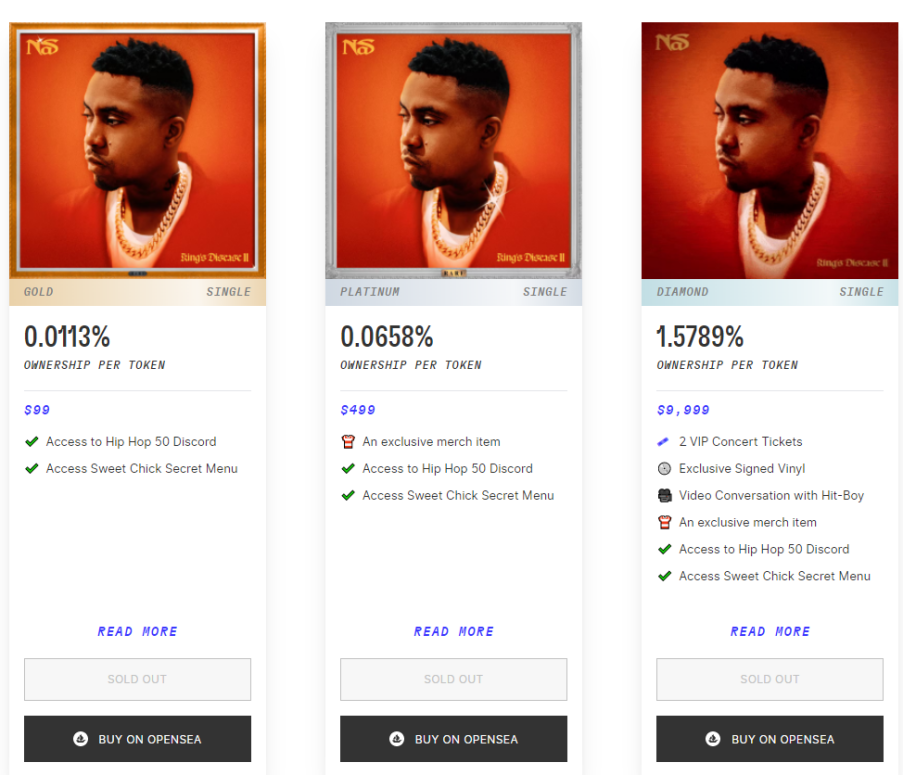
Royal is to sell artists’ streaming media royalties under the Spotify chain to players through NFT. Players can obtain royalties from future artists. Different levels of NFT holders receive different percentages of royalties, which is equivalent to collectors investing in singers . In addition to royalties, different NFT holders can obtain other benefits. There are already 10 pieces of music on the platform, including the single "Don't Forget My Love" by Grammy-winning DJ and electronic musician Diplo. The founder of the project is the famous musician DJ Justin Blau, also known as 3LAU, and the platform has relatively rich music resources.
image description
Source: Royal
image description
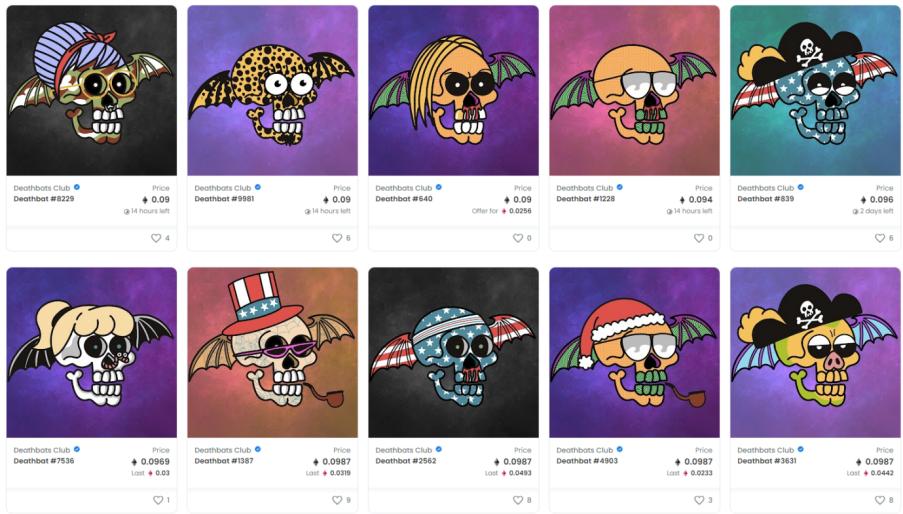
Source: OpenSea
Source: OpenSea
secondary title
2.5.1 Songcamp
2.5 Web 3 Music Community - Decentralized Exploration, Drawing on the DAO Model
Songcamp is like a hackathon for Web 3 music creation. It started in March 2021 and is held at the rhythm of two events per year. So far, there are 3 events: Camp Genesis, Camp Elektra and Chaos. Here we mainly discuss the latest event Chaos .
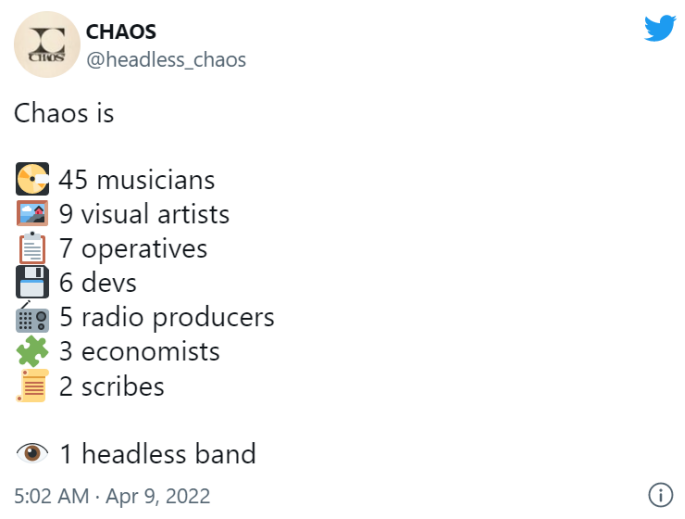
Chaos, Songcamp's third campaign with a larger scope than the previous two, will launch in March 2022. It is an eight-week music creation experiment. 80 participants come to Songcamp Discord to create music and form a headless band. There are 7 teams in Chaos: music, visuals, operations, development, radio blogging, economic model design, and cross-functional teams.
image description
Source: Chaos Twitter
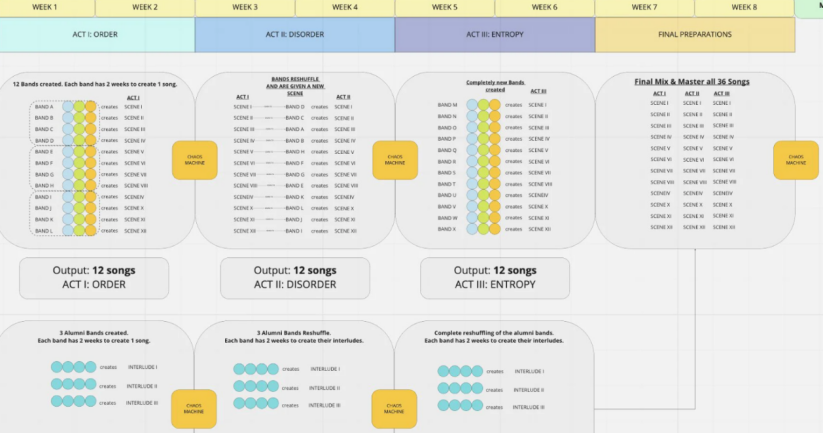
Eight-week schedule:
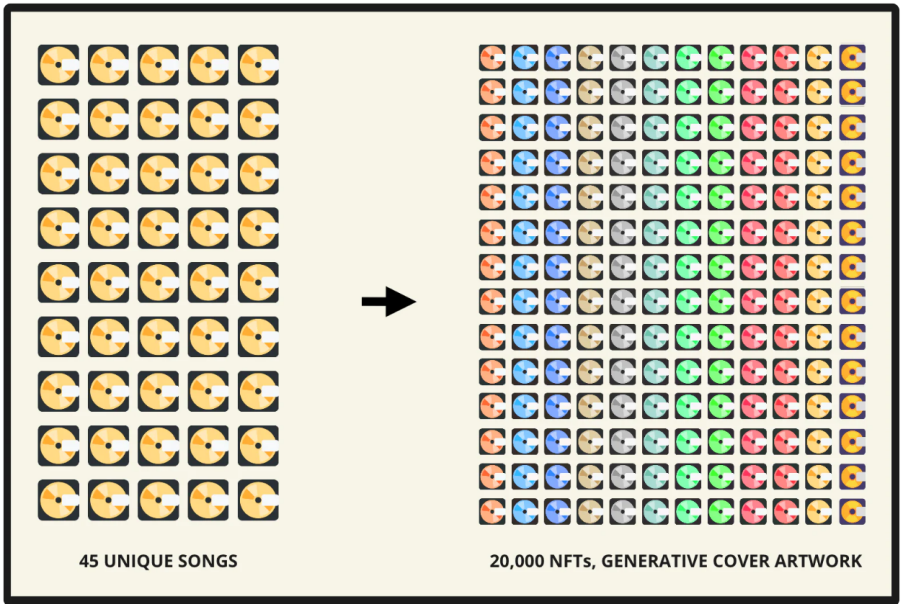
45 songs packaged into 20,000 NFTs:
2.5.2 Good Karma Records
image description
Good Karma Records is a Web 3 record DAO. Before signing any artist, Good Karma Records will hold a live showcase in Los Angeles to showcase potential signers to members. The event will be held by $KARMA token holders and Genesis NFT Providers with exclusive access, artists need to be onboard through mirror’s crowdfunding, and DAO members can use $KARMA tokens to directly vote for their favorite performances and artists. Artists will receive $KARMA tokens after signing the contract, and the amount of $KARMA tokens allocated to each artist will be voted by the DAO at the time of signing, thus giving artists the governance rights of the DAO. Members are rewarded with $KARMA for signing artists, working on records such as (production, graphic design, etc.), and contributing to the day-to-day operations of the DAO. The services that DAO can do for artists include: setting up wallets, creating and distributing NFT, and answering all Web3-related questions; recording, making songs, etc.; publicity work. But the potential risk is that DAO organizations may not have very professional operation and production capabilities to promote artists and their records.

image description
Source: Mirror
first level title

Below we have sorted out the project financing of the main Web 3 music sector, most of which focus on seed round financing.
4. Thoughts on the development prospect of Web 3 music
4.1 Web 3 music can strengthen the closed-loop economic ecology between fans and artists, but the current business chain is too short
Fans’ investment in artists has become quantifiable, and the relationship between the two has changed from one-to-many to one-to-one. Artists can pay more attention to their loyal fans. These fans also deserve different benefits. They are investors of artists . Artists' financing becomes simple, and they can also directly generate income. Creating music is no longer generating electricity for love. But at present, the entire business chain of the fan economy of Web3 music is relatively short. Most singers still rely on the logic of selling around with the help of Web3 music, and regard selling NFT as another means of increasing income. The connection between fans and artists is not close enough. Relying on the logic of trading peripherals and collections is also difficult to rely on music NFT to form an artist community.
4.2 Music NFT can make the industrial supply chain more transparent, but the actual operation is difficult
As mentioned above, there are a large number of black box royalties in the traditional music industry, and casting music into NFT can automatically distribute the royalties. For example, in the cooperation between Sound and the label Soulection pointed out in the Delphi research report, after the listening party, more than 300 NFTs were sold to buyers at a price of 0.1e, and then automatically divided among labels, planners and artists using 0xSplits technology . However, the supply chain of the traditional music industry is quite complex, including upstream creators and singers, midstream record companies, and downstream streaming media. If the industrial chain and business model are all moved to the chain, the legal risks involved and the complexity of practical operations need to be considered. In fact, for example, only the upstream creative layer is considered, including lyrics, composition, artists, modeling, Relevant parties such as vision, designers, photographers, producers, and directors often do not simply record the income of all subjects in the smart contract in the form of percentages in the same mode as off-chain. If there are very few and streamlined participants, you can consider using an on-chain revenue splitting protocol such as 0xSplits to split the revenue.
4.3 Compared with PFP, music NFT has more application scenarios waiting to be discovered
Compared with picture NFT, the visual impact of music NFT is not strong enough. People need at least 10 seconds to listen to music before deciding whether to buy it. This also determines that it is particularly important for Web3 music applications to be equipped with players under normal circumstances. In terms of application scenarios, the most intuitive applications of image NFTs are social media avatars, games, and metaverse avatars, which have natural and powerful social attributes, but where will music NFTs have wider and more disseminated applications besides collections? Will it be the twitter profile or the BGM of game characters? However, Gala music under the Gala ecosystem is also trying to use the music NFT on the platform as the background music of its ecological games. The music flow comes from the game, and music NFT holders, nodes, and artists will be rewarded when the music is played. In addition, for the social attributes and communities of Web3 music, sound.xyz's visual social networking and listening parties provide us with a reference example.
4.4 Traditional Web 2 music resources cannot be ignored
In the early stage, the project party needs to obtain as many IPs as possible from well-known musicians, and only relying on long-tail or niche musicians cannot attract traffic, although Delphi’s research report points out that the sales of Web3 artists in Catalog and the traffic in Spotify are not comparable. Relevance, there are only a few thousand followers on twitter, and most singers on the Web3 platform are independent and have received early support from collectors. But for most projects, owning traffic and IP is the best way to start the project. The works of independent musicians on platforms without good music resources and operating capabilities in the early stage can easily become zombie music that no one cares about. Refer to Royal, Emanate, Audius, Opulous, and OneOf. The founders or investors of these teams undoubtedly have a strong background in the traditional music industry, and the music resources of the platform are also remarkable, such as Diplo, a Grammy winner on Royal. And the rapper Nas known as the "New York rap emperor". Referring to the explosion of small pictures, although people’s acceptance of crypto native seems to be higher than that of traditional art works on the chain, it is undeniable that Takashi Murakami, Spanish humor artist Joan Cornellà, and other artists who have made achievements in the traditional art field have achieved NFT The popularity of the work is still very high.
4.5 The innovative model of music dissemination and publicity is worth thinking about and exploring for Web 3 music
As mentioned above, Web3’s zombie music may end up being uninterested, and the world of music NFT is also reserved for those who have accumulated a certain amount of experience in the traditional music industry. Although Web3 has provided a platform for musicians, it has not solved the problem of exposure in essence. So how do niche musicians cold start? We can refer to the form of the decentralized music distribution platform sonorus. The platform cooperates with local players in Vietnam. The platform track link and SDK coexist. Users can share music to social media through the platform, and third-party apps can also call the project's music library and The data is promoted to earn, and those who spread it will be rewarded with tokens, so as to gather people with strong spreading ability, and spreading and publicizing are exactly what niche independent musicians need most. Spotify’s publicity and release operation for independent musicians and their songs without a label is to put their songs in the popular music library and playlist for general publicity. In addition, platforms such as short videos and live broadcasts also allow artists to promote music and cultivate musicians, but These platforms, such as Tik Tok, are highly dependent on upstream copyright providers, and need to put the copyright provider's music library in the APP for creators to use. Moreover, most musicians and labels are exclusive, and other channels of publicity cannot be used. So referring to the sonorus model, from the perspective of publicity, communication and exposure, it seems that the cold start of musicians in the long tail market in the Web 3 world is no longer so difficult.
4.6 Token empowerment and economic model design need to be improved



